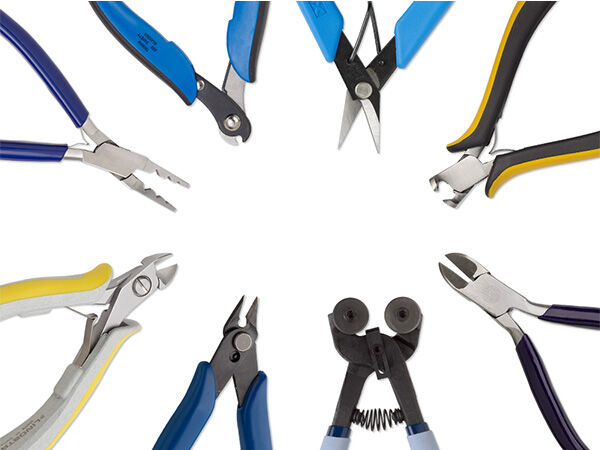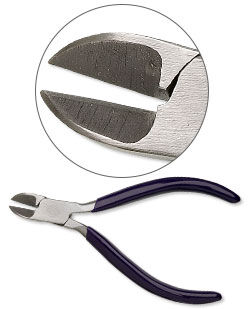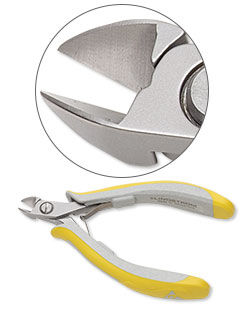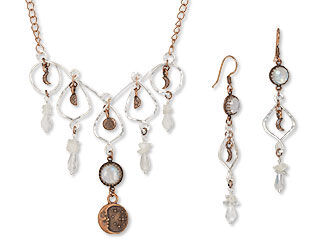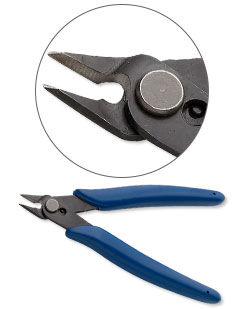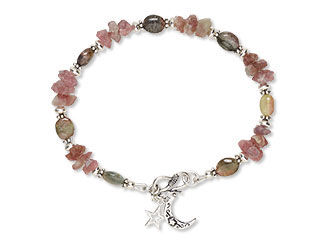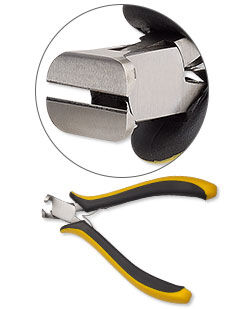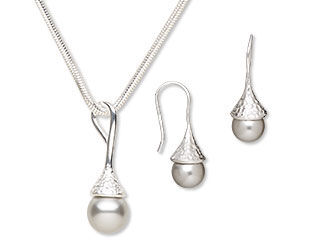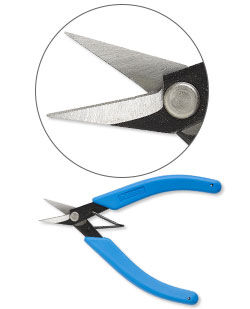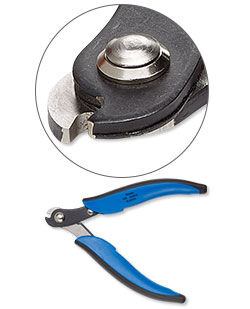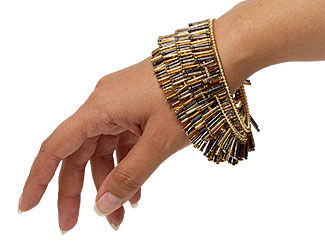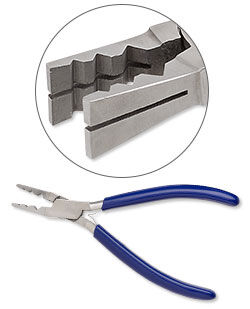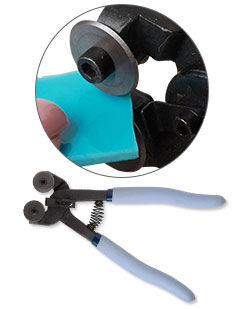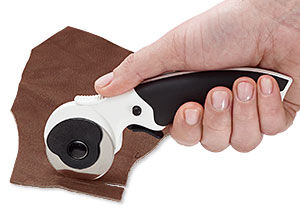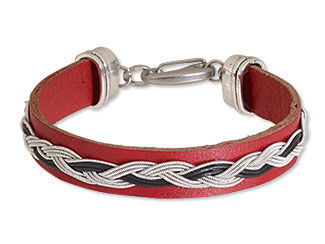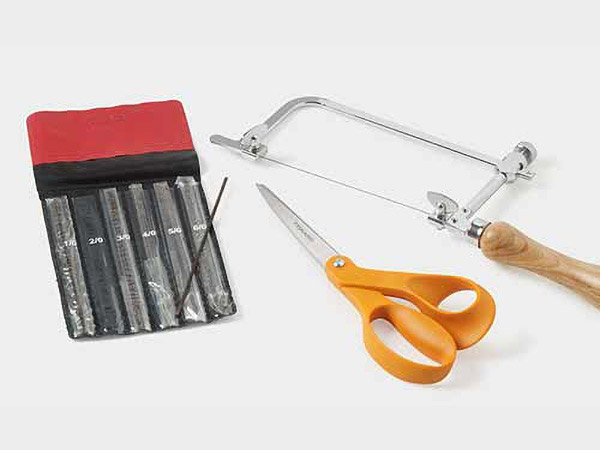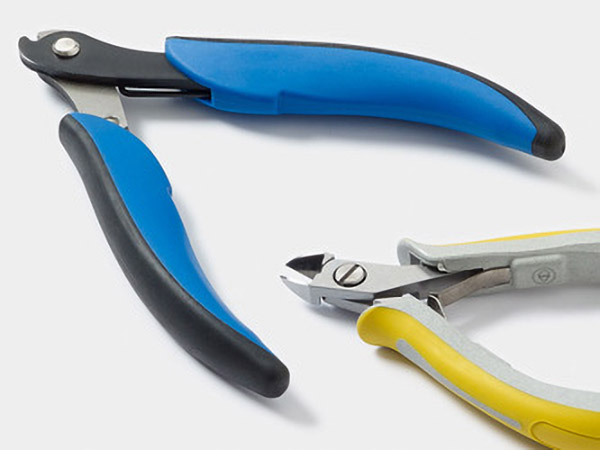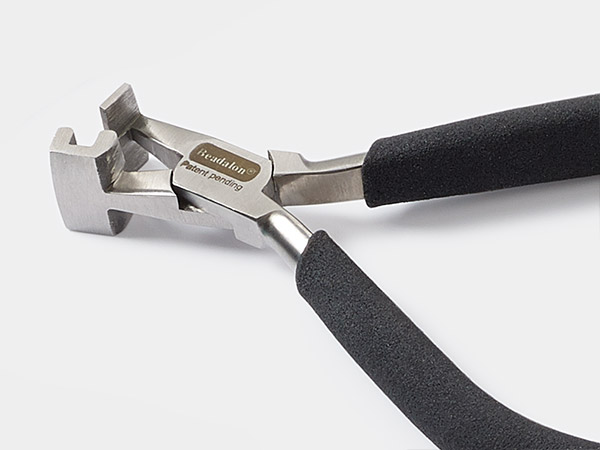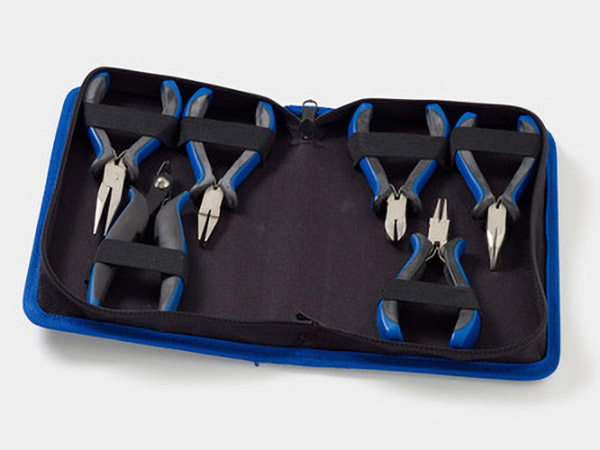Everything You Need to Know About Jewelry-Making Cutters
Jewelry makers who treasure showing off refined, high-quality techniques in their designs understand the importance of having and using the correct tools. Jewelry-making cutters are most typically used to cut wire, both beading and wrapping types, but some are designed for sheet metal, memory wire, glass or leather. It's important to be able distinguish one type of cutting plier from another. Glass, leather and memory wire require specialized tools for the best results, but it's pretty safe to say that all other types of jewelry cutters will cut just about any jewelry-making material. That said, you should still be careful what you cut with them, especially if your cutters are a considerable investment.
Cutters are generally categorized by the direction they cut—side cutters or end nippers. Within each of these styles are further details that will help with your purchase. Most jewelry-making cutters have rubber-coated handles for a secure grip, and many are ergonomically shaped to ensure comfortable working.
Be advised that jewelry cutters are made with a wide variety of metals that vary in quality. As you become a more accomplished jewelry maker, you may see your designs becoming more challenging and elaborate. You will need to "level up" your tool set to produce a clean, professional-looking creation more efficiently.
Side-Cutters
Side-cutters are any type of cutters whose jaws are parallel to the handles, resembling scissors. Most jewelry-making cutters are made this way.
This project uses side-cutters to cut lengths of wire for the earrings:
Flush-Cutters
Flush-cutters are a large subset of side cutters. "Flush" refers to the shape of the jaws. Any type of cutter can be "flush" if the jaws are beveled, creating a flat cut on one end of your wire and a V-shaped or pointed cut on the other. On wire that will show in your finished design, trim your ends with the flat side facing your work for a clean, professional look.
Here is a jewelry-making project that starts off using flush-cutters:
Stringing Wire Nippers
Stringing wire nippers are great for cutting Accu-Flex®, Acculon® or other nylon-coated beading wire. The narrow, sharp tips allow you to get into tight spaces to trim off that last bit of wire in stringing designs.
To make this bracelet, you'll need to start off using wire nippers to cut Accu-Flex®:
End-Cutting Nippers
End-cutting nippers are a personal choice, since more flush cutters can do the job. The advantage of end-cutting nippers is their flat jaws that are perpendicular to the handles. This makes them great for trimming off short lengths of wire on your finished design, adjusting the pegs on settings for half-drilled beads and cutting the posts off earstuds.
End-cutting nippers are perfect for adjusting the pegs in this jewelry project:
Memory Wire Shears
As the name implies, these cutters are specially designed to cut memory wire. It is important to use only memory wire shears for cutting memory wire, as the wire's hard steel composition will damage other types of jewelry-making cutters.
This bracelet project uses memory wire:
Tube-Cutters
The name can be a bit confusing, since tube-cutters don't actually cut anything. These pliers are specially designed to hold 2-10mm diameter rods or tubing while they are being sawed. This prevents the rods and tubing from compressing or becoming distorted.
Glass Cutters
Glass cutters have sharp-edged wheels on their jaws that roll over glass for smooth cuts. View our ''Cutting Glass with Glass Nippers'' illustrated instructions for more information.
Leather Cutters
Leather is a popular material for boho, mixed-media and other jewelry styles. Similar to tools used in sewing and quilting, this leather cutter uses a sharp rotary wheel to make crisp, precise cuts.
Use a leather cutter to cut flat leather cord to size for this bracelet project:
Here is comprehensive chart showing cutters organized by the types of materials they are designed to cut as well as what gauges of wire, beading cable and sheet metal they will cut. You will notice that many of the cutters, especially flush cutters, will appear under multiple headers to show how versatile they are.
For a survey of the most commonly used tools for jewelry-making in addition to cutters, consult A Guide to Jewelry-Making Hand Tools.
Shop for Your Materials Here:
Have a question regarding this project? Email Customer Service.
Copyright Permissions
All works of authorship (articles, videos, tutorials and other creative works) are from the Fire Mountain Gems and Beads® Collection, and permission to copy is granted for non-commercial educational purposes only. All other reproduction requires written permission. For more information, please email copyrightpermission@firemtn.com.
